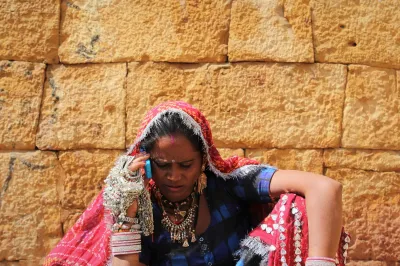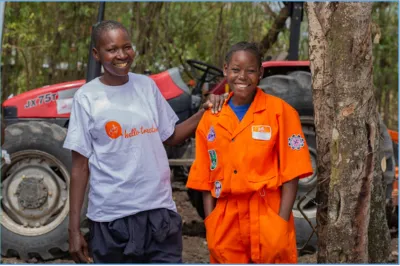Highlights and Headlines for January 2011
The news wires have been busy with the recent announcement of partnerships and joint ventures in the Indian branchless banking market. India’s largest public sector bank, the State Bank of India, announced a joint venture with the mobile operator Bharti Airtel to offer mobile banking. Meanwhile, India’s largest private sector bank, ICICI Bank Ltd, announced its tie-up with Vodafone Essar to bank the unbanked via the mobile phone. As the Hindu Business Line writes:
These two initiatives take mobile banking services to a whole new level. While Vodafone manages over 1.5 million retail points for acquiring customers and servicing them, Airtel is present across 5,101 towns and more than 500,000 villages. That’s a big deal considering that The National Sample Survey data reveal that 51.4% of nearly 89.3 million farmer households do not have access to any credit from institutional or non-institutional sources…Only 13% are availing loans from the banks in the income bracket of less than Rs 50,000.
The Pakistani media was also abuzz with the pronouncement of the State Bank of Pakistan Governor that:
Branchless banking is the future of the country’s financial sector as it opens up opportunities for bringing unbanked segments of society into the financial system.
Governor Kardar made this address at the signing ceremony between United Bank Limited (UBL) and Shore Bank International for UBL’s branchless banking initiative, Omni banking. Meanwhile, easypaisa, launched by Tameer Microfinance Bank and Telenor in October 2009, reports carrying out 10 million transactions valuing Rs. 17 billion in 15 months since launch.
We are seeing more and more bank-MNO partnerships form in this industry, but each partnership seems to look a bit different from the last one. The GSMA Mobile Money for the Unbanked came out with a timely paper on this subject called “Mapping and Effectively Structuring Operator-Bank Relationships to Offer Mobile Money for the Unbanked.”
In the MNO mobile money world, the topic of interoperability always comes up, as Ignacio Mas blogged about for us a few weeks ago. Perhaps the Philippines will lead the way again in this respect. Speaking at the Mobile Money Transfer Asia Pacific conference in Manila, Globe President Ernest L. Cu said:
It’s heresy but we need to work together and interconnect. We can’t have two mobile currencies circulating. We are not talking about electronic load anymore, we’re talking of cash. It will be another challenge because we (Smart Communications Inc. and Globe Telecom Inc.) are competitors.
Meanwhile, in another part of the world, the Mobile Remittance Summit for West Africa just concluded its two-day conference in Lagos, Nigeria. And further down the continent, an interesting blog from a Kiva fellow in Kenya explains some of the challenges of linking the Kenya MFI, Kenya Agency for Development of Enterprise and Technology (KADET) into the M-PESA platform for mobile repayments:
* Client resistance to change: Many clients feel more comfortable with tangible, paper evidence that they’ve paid and have opted for the reassurance of a paper receipt from a bank over the convenience of using M-PESA. * Mobile repayments can hurt group attendance: Initially mobile payments caused a drop in group meeting attendance. Credit officers had to reinforce the importance of meeting attendance, in spite of mobile payments, and KADET has been able to reverse this trend. * M-PESA is not easily compatible with internal systems. Data from M-PESA cannot directly be imported into the management information systems (MIS) at MFIs. For KADET, this means all payments made through M-PESA have to be manually input into their MIS, another opportunity for human error to affect the process. A number of start-up companies have developed bridge software to move data from mobile providers to MIS but most MFIs, including KADET don’t have this yet.
At the same time, they mention several benefits that come with the link to M-PESA:
* Outreach to rural areas. Most of KADET’s clients are located in rural areas. Even small villages have an M-PESA agent, though they may not have a bank branch. This means some loan groups save up to a full day of travel to a bank areas (most of KADET’s clients are located in rural areas). * Efficiency in repayments. Mobile payments reduce the time it takes for client repayment data to be input into the MIS: many of the offices in remote areas would use a courier service to send all repayment receipts to main offices. This also reduces the amount of paperwork that can potentially be lost.
These insights add to the case studies we presented last year in our Focus Note Microfinance and Mobile Banking: The Story So Far.
- Sarah Rotman




Add new comment